May 20, 2025 | 21:14 GMT +7
May 20, 2025 | 21:14 GMT +7
Hotline: 0913.378.918
May 20, 2025 | 21:14 GMT +7
Hotline: 0913.378.918
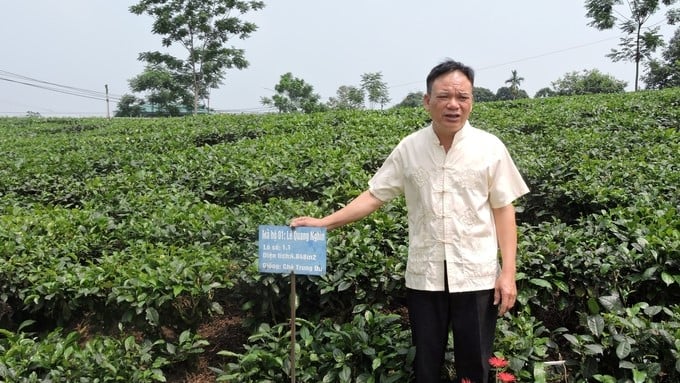
The midland tea hill has been planted since the 1960s. Photo: Van Viet.
Mr. Le Quang Nghin (Hong Thai hamlet, Tan Cuong commune, Thai Nguyen city) is now one of the most famous tea-making households in Tan Cuong. His certificates of merit for good economic performance are from the central to local levels, and certification of clean tea or high-quality tea is up to hundreds of pieces. Mr. Nghin also often goes from place to place to compete for talent.
According to Mr. Nghi’s sharing, since 2011, when the Thai Nguyen Tea Festival was successfully held for the first time, the tea-making profession in the Tan Cuong region has also turned a new page. With a larger scale and more science and technology applied to meet the increasingly strict standards of the market. Supporting machines with gas stoves and electric stoves replacing wood burners and crushing and drying machines gradually replacing limbs, etc.
Of course, the work is easier and the labor productivity is higher, but that is not why the value of the tea artisans’ hands is underestimated; on the contrary, it shows more and more traditional value that cannot be matched anywhere else.
“Professions choose people”, Mr. Nghin summed it up. There maybe are few traditional crafts as elaborate as tea-making profession. Whether by machine or by hand, Tan Cuong tea must go through at least seven steps. New tea varieties planted after about two years begin to sprout buds and can be harvested each year about 8 to 10 litters if planted well. Depending on the purpose of making tea, tea is plucked in different ways. For bud tea, pluck a young bud with 2-3 old tea leaves; Moc Cau tea to pluck a bud with two adjacent young leaves; Non Tom tea to pluck a bud with one young leaf; and Dinh tea or other high-class teas to only pluck tea buds.
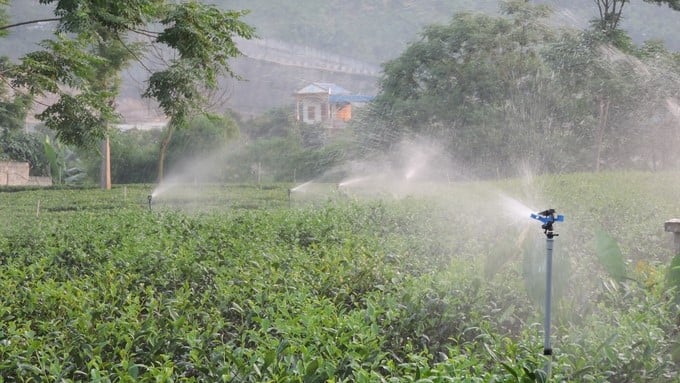
Tan Cuong tea today. Photo: Toan Nguyen.
After being plucked in the early morning, tea leaves are immediately put into withering by pouring it on the floor or in a large flat basket kept under the shade to avoid exposure to the sun shine. The purpose is to remove the tea’s moisture content before bringing it to the initial tea-drying stage. In the past, the Tan Cuong people used cast iron pans and cooked with firewood; today, there is a sheet metal stove for initial tea-drying. Withered tea is put on the stove to roll at a sufficient temperature, not too hot to avoid burning the tea. Only at the level where tea buds are soft and the pungent smell is blown away, leaving only the characteristic flavor of tea.
The next is the kill green stage. This is the difference between Tan Cuong tea as well as Vietnamese teas compared to those of many other countries. Tea makers in Tan Cuong use high temperatures to inhibit enzyme activity and reduce tannins, reducing bitter tastes and locking in the tea's flavor and green color. "This is a very important first step. Just overdo it a little, and the batch of tea will be thrown away because by the time of crushing the tea, all of it will be shattered," explained Mr.Nghin.
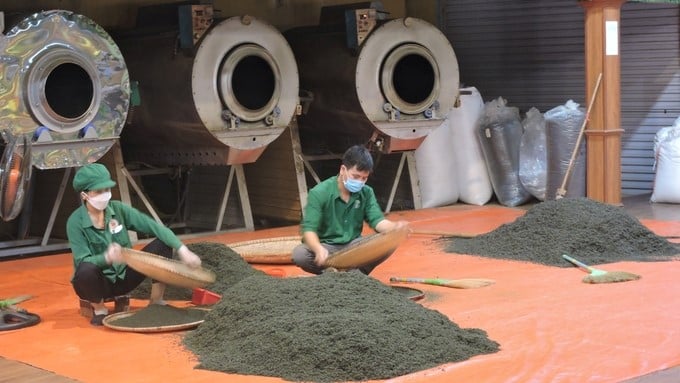
One stage of making Tan Cuong tea. Photo: Hoang Anh.
At the end of the kill green stage, it will be the time for tea crushing step to remove the dust tea and then put it in the crushing mortar. Mr. Ngan said that this is a very difficult stage; in the past, the tea village people had to crush it directly with their limbs.
There is a Tan Cuong girl completely wrapped up in tea all year round, and her legs and feet are eaten by tea sap. Going to the doctor, she was told she would be able to have her legs amputated because they were completely rotten. Nowadays, with a crushing machine, it is less difficult and only takes about 20–30 minutes. After crushing it, scatter it. Beautiful or ugly tea wings depend on this step.
The quintessence and characteristics of Tan Cuong tea lie in the steps of drying, making tea mould and mixing with some fragrances. Drying is a way to reduce the amount of water in the tea buds and make the tea buds curl tight, be beautiful in appearance, be green in color, and be pleasant in flavor. Although most people in the tea land currently have invested in machines and the temperature is already displayed on the electronic board, the whole process must be felt by hands. A few moments faster, the tea has not reached the moisture content, leading to rancidity, and if a few moments slower, it will lead to tea burning, and the whole tea batch is thus considered to be thrown away. Experience and senses of good or bad tea makers are at this moment. Mr. Ngan said this and put his hand on the unfinished batch of tea. Only with 2–3 seconds to feel before deciding to continue or stop. A good tea drier is a person who regulates the temperature and time to make the finished tea reach the moisture content in the tea buds of 3–5%. When the tea cools down, put a few buds in the palm of your hand and gently press them to crumble.

The tea profession in Tan Cuong. Photo: Van Viet.
The stage of making mould and mixing with some fragrances is even more important because this is the final decisive step in the success or failure of the whole tea batch. The tea maker must adjust how to make the flame not too big but not too small. The high fire causes the tea to overheat, crumble, and burn. The small fire is not hot enough to break the essential oil texture inside, making the tea lack the green rice flavor. The fire is both large and small, causing the tea to be hot, suffocating with flavors, and having a bad color, but drinking it is not good. All decisions are made within half a minute; therefore, it is often necessary for an able man to take charge of this step. Skill is part of it; you have to put your whole mind into it. Listen, touch, smell, feel, and judge. In the days when able men like Mr. Nghin had a cold and his ears and nose were not good, the whole cooperative group "hanged" the tea there, waiting to be healthy to dare to do it.
"It is okay to call good tea makers artisans, even though the state has not had an awarding policy. Because in addition to the heirloom factor from generations to generations, it is not only trying to make good tea but also having the gift of feeling, the heart with the profession in it. There are people who have studied for 5-7 years and are proficient in the profession, but there are also lifelong learners who are just ordinary tea makers and cannot pass the stage of taking flavor, so they cannot "go down the mountain", "said Mr.Nghin.
The Tan Cuong tea land has many able men. There are young people and there are old people. From their hands and brains, Tan Cuong has more and more excellent teas that not everyone can make.
In addition to the ancient tea tree grown since his grandfather's time, Mr. Nghin's family is also a rare household that still retains the midland tea hill planted by his father in the 1960s. On the occasion of the tea festival of the commune or the province, his family’s tea hill becomes the place to organize golden hand contests such as tea plucking, tea drying, the beauty contest of tea land, etc. All three Thai Nguyen Tea Festivals take place here. Watching Mr. Nghin demonstrate the techniques of the tea profession, domestic and international tourists both admired and respected him.
Translated by Huyen Vu Thu
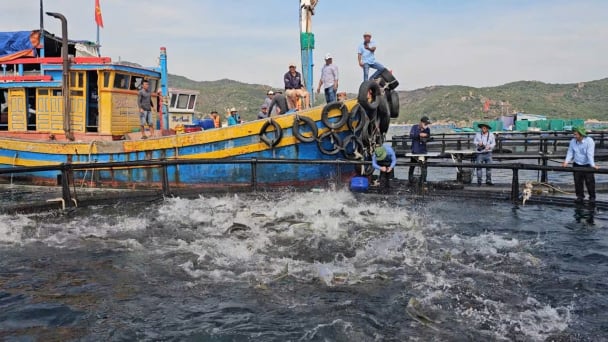
(VAN) Khanh Hoa is investing over 545 billion VND to develop 240 hectares of high-tech marine aquaculture in order to guarantee a consistent supply of seafood exports and achieve the USD 1 billion target.
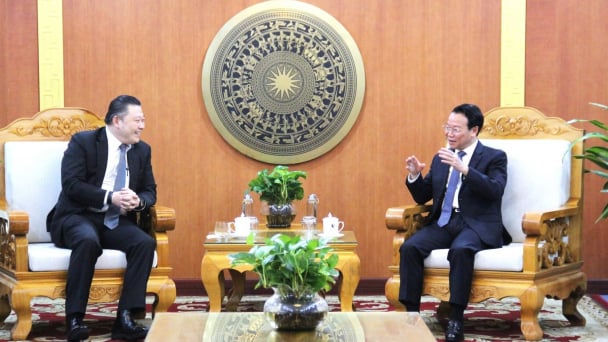
(VAN) Minister of Agriculture and Environment Do Duc Duy held a meeting with Soopakij Chearavanont, Chairman of C.P. Group, on May 15.
/2025/05/16/3800-0-nongnghiep-143756.jpg)
(VAN) Suntory PepsiCo Vietnam coordinated with the Ministry of Education and Training to implement an education program on water conservation, reaching nearly 1 million primary school students nationwide.
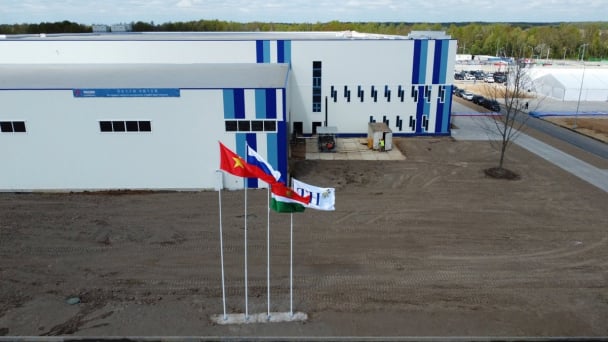
(VAN) Vietnam’s TH Group officially put its high-tech fresh milk processing plant into operation in the Russian Federation, marking a historic moment as the first TH true MILK cartons were produced in Russia.
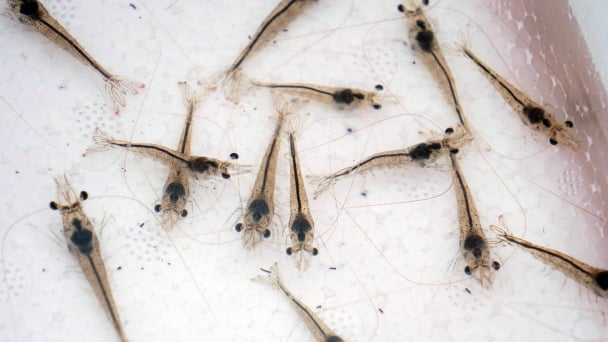
(VAN) Use of high-quality broodstock and biotechnology is regarded as the most effective approach to ensuring sustainable and economically viable shrimp aquaculture ahead of climate change and the emergence of increasingly intricate disease patterns.
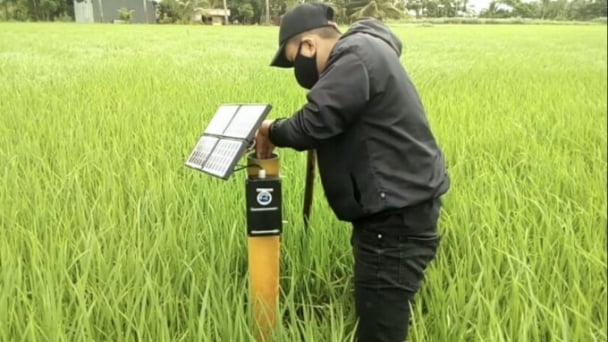
(VAN) Carbon farming is a form of agricultural practices that helps absorb more greenhouse gases than it emits, through smart management of soil, crops, and livestock.
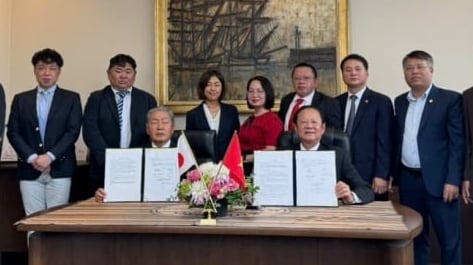
(VAN) This is a key content of the Memorandum of Understanding recently signed between the Vietnam Fisheries Society and Kunihiro Inc of Japan.